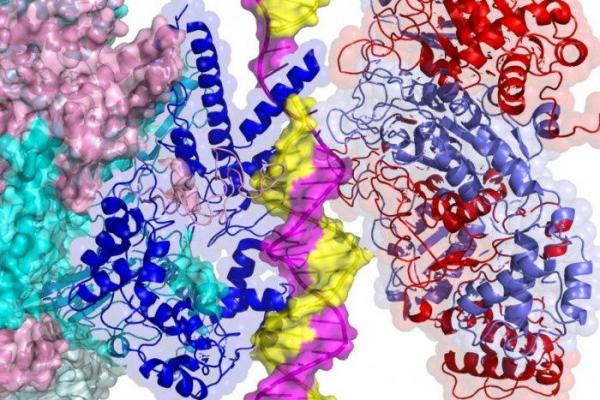
June 3 (UPI) — Gene sequences are just a recipe, a list of ingredients and instructions. They must be transcribed and executed. The coding must be translated into an array of proteins, which carry out the molecular functions that make life possible.
For the first time, scientists have observed the transcription process inside a cell. Researchers used cryo-electron microscopy to watch as cellular machinery “read” and translated DNA code into proteins.
DNA is formed by a pair of strands twisted into a helical structure. Inside the cell, specialized molecules work to separate the strands and “melt” them, so to prevent them from returning to their intertwined form.
This “opening” process is relatively complex, with a lot of biochemical action happening in a very short amount of time. The latest research, detailed in the journal Molecular Cell, offered the first-ever detailed view of the phenomenon.
Understanding how cells translate genetic code could help scientists thwart harmful bacteria. The new findings could help scientists design antibiotics that target and disrupt the transcription process.
“Understanding how the fundamental machinery works hopefully gives us additional tools for developing new kinds of antibiotics,” lead researcher Xiaodong Zhang, a professor of medicine at Imperial College London, said in a news release. “As we investigate more steps in the process of transcription, we may find more stages during which we can intervene and attack harmful bacteria.”
Because transcription is essential to all cells in all organisms, the new knowledge could be used to develop therapies for a variety of diseases.
“DNA contains genetic information, which is converted to proteins that carry out all cell functions. Transcription is the first stage in accessing that information,” said Martin Buck, professor of life sciences. “It underpins all environmental adaptation in organisms — it’s how cells deal with their changing environments or even become abnormal, such as in cancer cells. Our work could therefore have implications across a range of biological processes.”
During their observations, researchers at Imperial College London paid close attention to the role of sigma54, a protein essential to the regulation of bacteria’s defense mechanisms.
Scientists found that sigma54 and another “activator” protein combine to form a wedge that pries the pair of DNA strands apart, allowing genetic coding related to bacteria’s defense to be read and translated. If scientists could find a way to disrupt this process, they could render bacteria defenseless.






